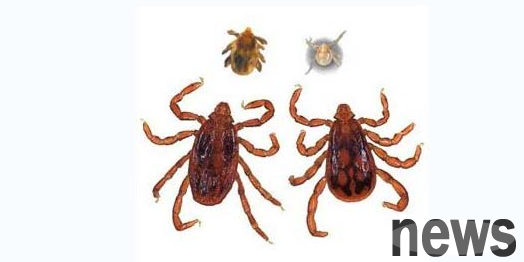What to do if there are hard ticks on dogs?
Hard ticks, also known as grass crawlers, dog beans, ticks, and ticks, are an important ectoparasite in dogs. The main hard ticks that parasitize dogs include hemoglobin ticks, schizoidae ticks, schizoidae ticks, prairie ticks and micro-calf ticks.

Hard ticks also vary according to their species. The blood-red fanhead ticks, long-horned blood ticks and diced blood ticks mainly live in agricultural areas and wild areas, with the activity season from April to September; grassland ticks mainly live in grasslands, and overwintering adults start to appear in early spring in late February or early March, with the peak period in April and gradually decrease in May. The micro-calf ticks mainly live in agricultural areas, with the activity season in North China from April to November.
1. Causes of parasites of hard ticks in dogs
1. The main hard ticks parasitized on dogs include hemored fanhead ticks, schizophrenia ticks, horned blood ticks, grassland ticks and micro-calf ticks. 2. Hard ticks are incompletely metamorphic arthropods, and their development process includes four stages: eggs, larvae, nymphs and adults.
3. Most hard ticks mated on animals. After mating, the female ticks that sucked blood and landed on the ground, climbed into the gap or under the soil block and remained still. Generally, after 4 to 8 days, the eggs began to lay after the blood was digested and the eggs were fully developed.
2. Clinical symptoms of parasitic ticks
1. Most dogs do not show clinical symptoms when bites by a few ticks, but when the number increases, the sick dogs appear to be itchy and restless, and often rub, scratch or lick and bite to try to get rid of pests. However, this effort often leads to local bleeding, edema, inflammation and keratin hyperplasia.
2. A female tick sucks an average of 0.4 ml of blood each time, so when parasitic in large quantities, it can cause anemia, weight loss and dysplasia.
3. If parasitizes on the hind limbs, it can cause hind limb paralysis (the action of neurotoxin).
4. If parasitizes between the toes (even if only once), it can cause pace. Even after the tick is removed, the limp will last for 1 to 3 days. In addition, hard ticks are also an important vector of other parasitic diseases and infectious diseases, which indirectly cause dogs to suffer from illness.

3. Preventive measures for parasites of hard ticks
1. Eliminate ticks on dogs. You can catch them by hand, or apply kerosene and Vaseline oil to the parasites, so that they can be suffocated and removed. 2. When pulling out the tick, pull the tick body and the dog's skin upward in a vertical direction to prevent the tick mouthparts from falling into the dog's body, causing local inflammation. 3. The ticks caught should be killed immediately. 4. To eliminate hard ticks in the kennel, you can spray 0.75% DDT on the ticks living in the kennel gap.




